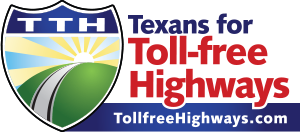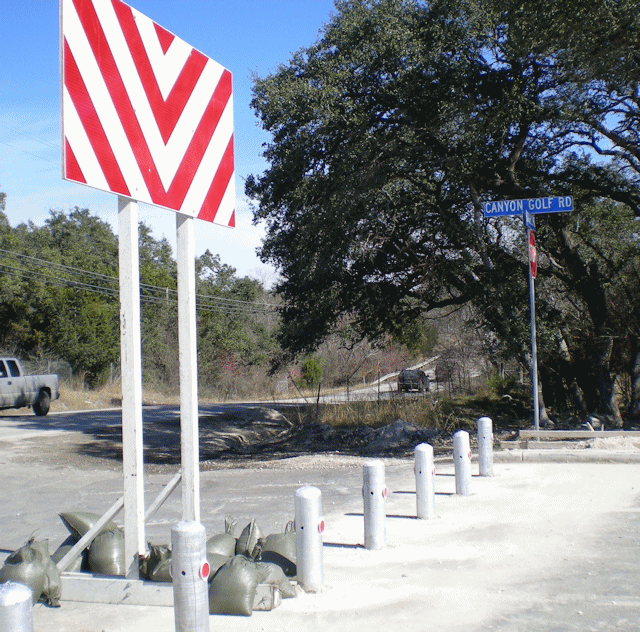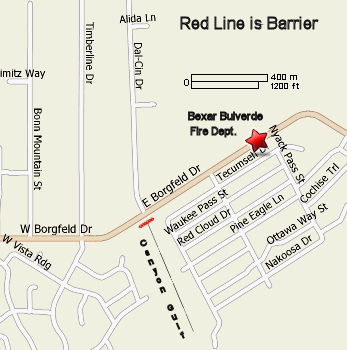Senate Transportation Committee and Senate Finance Committee held a joint hearing in Austin today to probe TxDOT’s supposed funding shortfall for 2008. The Legislature wasn’t even out of session 6 months before TxDOT fired-off letters to legislators telling them they planned to cut billions in already committed/funded projects. The sparks flew back and forth during the heated “discussion” that seemed more like a public flogging of TxDOT than a committee hearing. Here’s just a flavor…
Senator Steve Ogden, Chair of Senate Finance Committee, on TxDOT’s balance sheet: “This is really screwed up. Y’all need to redo your sheet.”
Senator Tommy Williams: “TxDOT has poor internal controls…I don’t have confidence in anything TxDOT is telling this committee.”
Senator Kirk Watson: TxDOT’s either “political or incompetent.”
Senator Judith Zaffirini: “TxDOT is an agency in turmoil and chaos. This (blaming Legislature for TxDOT’s own incompetence and poor planning) disdainful and awful behavior by some agency staff is at best intellectually dishonest.”
_______________________________
The senators put the screws to TxDOT for three hours, and something remotely resembling the truth managed to emerge at the other end. The end result is that the Legislature ought to be exploring TxDOT’s “credibility gap” instead of its ginned-up funding gap. Fed-up like the taxpayers, the senators are tired of being lied to by a state agency over which they have oversight, tired of being lectured to by the Governor (who rejects ANY affordable transportation funding option besides selling off our freeways to his buddies), and tired of being blamed for TxDOT’s incompetence. Now let’s hope they finally mean it when they say TxDOT needs fixing!
TxDOT is up for sunset review in 2009, so it’s the Legislature’s golden opportunity to clean house at this “agency run amok.”
Though much transpired at the hearings today, here’s the summary of the juicy stuff. TxDOT had to admit that it put out false information that misled both the public and legislators about the claimed $4.2 billion “shortfall” (which acting Chair Hope Andrade later revised the term “cuts” to more correctly mean “delays”) and the reasons for it.
At the end of the day, TxDOT admitted to repeated accounting errors (overstating the 2008 shortfall by $3 billion), that they welcomed an audit “so we can know what’s going on” inside their own agency, and that they haven’t “cut” spending, but are rather just moving money around.
Senator Ogden brought up a good point when he stated that the Legislature gave TxDOT $7.5 billion MORE money this two-year budget over the last, so he questioned why are they cutting projects? TxDOT Executive Director Amadeo Saenz then admitted they are making “cuts” based on future projections of shortfalls in 2015, not shortfalls in this immediate 2-year budget cycle. In plain English, they’re making “cuts” now in order to advance the Governor’s political agenda of selling off our highway system to the highest bidder.
It’s good thing only a small cabal of ordinary citizens and taxpayers were there or TxDOT would have been run out on a rail! The most heated discussion of the day came when Senator Zaffirini asked TxDOT for the talking points it sent to the various district engineers who sent letters announcing the cuts in December 2007. TxDOT produced a different letter, but Zaffirini read the initial talking points TxDOT leadership sent out that blamed the U.S. congress and the state legislature, not TxDOT’s own overcommitment to projects it couldn’t fund due to the poor planning and chaos inside its own doors. Saenz admitted there are three divisions, forecasting, management, and the one that pays the actual bills, where neither knew what the other was doing.
Senator Watson summed it up best when he said: “So TxDOT’s either being political or incompetent.” But when the dust settled, all of them were more worried about the billions in lost contracts for the highway lobby than they were about the taxpayers held hostage by TxDOT’s incompetence and man-made congestion crisis.
The second half of the day was the first meeting of the study committee on private toll roads as required by SB 792, the private toll moratorium bill. The Governor’s 3 appointees rabidly pushed the MOST expensive option of privatization of our public infrastructure (bringing in the world’s top privatization guru, Robert Poole of the Reason Foundation) while the others were consumed with understanding market valuation.
To refresh you memories, TURF fought hard to strip the market valuation language from SB 792. This language never appeared in ANY bill the entire 80th session until Governor Perry got a hold of it (though Committee Chairman Senator John Carona,/span> credited Senator Williams for actually authoring that section). It’s a way to skirt around the federal law prohibiting the public sector from competing with the private sector to drive up the price of a public project.
Market valuation REQUIRES BY LAW that all toll projects undergo a determination of how much money the government can make off the road by analyzing the “value” of it the way Wall Street would. It’s called asset monetization and it translates into the highest possible toll rates, because instead of keeping the toll as low as possible, they determine how to get a BIG up-front payment just like the private toll roads. They figure out how much additional bond money they can milk out of one set of motorists in order to fund projects for other motorists. It’s Robin Hood applied to roads! The very thought of calling the public’s highways “assets” for government to sell off on the open market is OFFENSIVE and an economic disaster waiting to happen!
So when you hear a toller call toll taxes a “user fee,” think again. It’s another deception geared at making you think you’re paying a more direct tax tied to your actual usage of something rather than taking from one to give to another (which is EXACTLY what they criticize the gas tax for doing, making one part of the state help fund roads for other parts)! Regardless, this method of tolling is a targeted, discriminatory, purposely bloated tax, designed to be a government cash cow without the private toll road controversy.
Interestingly, one of the authors of the bill actually asked TxDOT (and agency with NO credibility) how market valuation works when he was the one who authored the bill!
Ream the taxpayer
One of the Governor’s appointees, former Transportation Commissioner John Johnson, essentially cautioned the 6 legislators on the committee to NOT consider their constituents, but rather to “keep the big picture in mind.” What big picture is he referring to? Selling the public’s freeways to the highest bidder for maximum profit.
Then, when the conflict with federal law was mentioned, Poole of the Reason Foundation, suggested TxDOT could petition the feds using an “SEP 15” (or special experimental program) process to WAIVE THE LAW allowing public agencies to compete with the private sector (which results in jacking up the cost to motorists)! OUTRAGEOUS! No one even blinked at the suggestion that they try to skirt the LAW!!! Note it was the lobbyist who knew the loopholes, not the policymakers. It further indicates who’s writing our laws, doesn’t it? We’re lambs being led to the slaughter, folks. WAKE-UP!
In addition, Senator Carona said TxDOT had a lot of explaining to do in regards to their admission (thanks to the evidence uncovered in our lawsuit) they broke the law by hiring registered lobbyists, yet didn’t breathe a word of it at these hearings. Why? “Because it’s pending in court.” Someone should have told Commissioner Ted Houghton that before he
admitted it ON CAMERA!
Our government isn’t serving us, representing us, nor looking out for the public interest. Our Legislature and Governor are a wholly-owned subsidiary of the Chamber of Commerce crowd, the Reason Foundation, and road contractors.
Start our taxpayer revolt on March 4. Go to the voting booth and work your way down the list….throw the bums OUT!




